#Checkpoint Osiris
Explore tagged Tumblr posts
Text
Starship Iris, season 1, episode 2:
BRIAN: Why? Oh, because of the whole--Frankenship thing? Trust me, the Rumor looks a lot better from the outside.
Starship Iris, season 1, episode 10:
SEIDERS: That’s the Rumor? Doesn’t look like much from the outside, does it?
...I guess it's relative xD
#TSCOSI#The Strange Case of Starship Iris#Starship Iris season 1#Checkpoint Osiris#Off the Air#Brian Jeeter#Agent Seiders#I was re-listening to episode 2 (first time in a while) and picked up on this fun parallel xD
11 notes
·
View notes
Text
Have accepted that I'm just relistening to The strange Case of Starship Iris again and what gets me in episode 2 Checkpoint Osiris is that everyone acts like Arkady really conned Violet, really tricked her, and that Violet fell for it...which she did, but she also realized something was wrong in time to idk, adjust what she was doing? Stop and question and reassess the situation before the point of no return? Like, yes Violet does eventually do what Arkady wants her to do, which is toss the samples and save her own life, but by that point Arkady does actually have to be very genuine with Violet about wanting her to live and offering her something that is worth more than dying.
And keep in mind that Violet is under incredible duress, assumes she's going to die, her environment is actively working against her, and is being manipulated by someone who is very good at doing that, and the Carmen Gambit is - we know! - designed to prey on someone's vulnerabilities!
I don't think she gets enough credit from the other characters for being as sharp as she is in that moment. Not only does she realize that Arkady is lying, she turns around and is able to bluff her way into tripping Arkady up! She walks Arkady into a trap!
13 notes
·
View notes
Text
To Bennu and Back - A Personal Voyage
The following was originally posted to my Medium on November 5, 2023. I figured the good people of Tumblr would enjoy a story, and some ramblings from my mind - so here we go. Please do remember to check me out elsewhere, most social media I have is under the same "nikproxima" handle. Without further adieu...
Today, in a rare moment of free time, I went and spent an hour in a museum. The Smithsonian’s Museum of Natural History has, for a long time, been a place where I’ve come to marvel at the wonders of our world — a place that shaped my long standing appreciation for science and technology. But today, I went to see a visitor from another world, a visitor who in many ways I had already met a few months prior — a piece of the asteroid Bennu, delivered to Earth by NASA’s OSIRIS-REx spacecraft.
I remember how cold it was that morning, deep in the salt flats of Utah, away from the lights and bustle of Salt Lake City. September in the desert is not always the kindest, it can be 80ºF or 30ºF all on the same day. It felt so alien, yet, somehow right for a pinpoint landing from deep space. My photographer Matt and I left the sprawling suburbs behind as we wove through the mountains and brine filled pools, singing along to music we had discovered a mutual interest in. The dark voids of landforms stood over us as we negotiated the twisting freeways, soon spitting us onto a two lane highway. We spent an hour and a half on our drive, checking and rechecking NASA’s Twitter for information about the mission until my cell service was reduced to one bar. There was a degree of confidence not found in rocket launches present that morning. We’d both covered launches in the past, and were acutely aware of the sensitivity of these great machines. Delays are the name of the game, but not today. This was happening, and we were powerless to stop it should anything go wrong.
The road we had taken through the inky expanse was narrow and dark, not a light to be seen. Only the ever dimming glow of the city we had left behind, and the ever brightening stars above us. We tried our best to pick out constellations and planets, craning our necks to see through the windshield. It was an alien world, and we were diving head first into it. There are no lights welcoming you to a military proving ground, only signs for you to stay away. Dugway is not exactly a friendly place, a complex and deeply secure military base lodged in the hostile flat expanse of the desert. Every element of our arrival was strange, the friendly welcome of NASA and University of Arizona officials contrasted strongly by the Army personnel. I can only imagine how strange it would have been for the staff of this isolated facility, watching a gaggle of press officials descending upon them.
As we filed in, through checkpoint after checkpoint, we found ourselves cemented in the thick of it. Officials from NASA, Dugway and UofA were eagerly counting off milestones. The spacecraft, having deposited its precious cargo, conducted its diversion maneuver as we sat on the dark and cold bus out the press site — truly alone. The spacecraft was off on the next part of its grand adventure, an exploration of the asteroid Apophis. But we were alone, just like those precious samples hanging over our heads. The press site was still dark when we arrived there, floodlights from the airfield bathing it in an eerie artificial glow as the sun threatened to creep over the distant mountains. Matt and I were quick to scour the place for a cup of coffee. The press tent was warm, warm enough to threaten to lull you to sleep — but there was too much excitement in the air. We were here, where we were meant to be, and those samples were coming. The flight line was adorned with helicopters, sleeping beasts equipped with cameras and other sensors to hunt for this precious treasure from deep space. We had a long wait before showtime.
I spent a good portion of this time speaking with Dr. Danny Glavin, from Goddard Space Flight Center in Maryland. Many of the questions he faced centered around the upcoming Mars Sample Return mission, a complex and expensive program proving to be a headache for many involved. He spoke to me with a genuine kindness and excitement for this mission, and missions to come. The desert’s silence was broken by the sound of rotor blades, as the four helicopters came to life, beginning their trek towards the staging area. This was a complex operation, practiced over the 7 years this spacecraft had been roaming the Solar System — becoming all too real this chilly September morning. It was getting closer now, closing seemingly impossible distances over our heads. I cannot describe the emotion I felt as the last helicopter left, threatening to topple us with the force of its rotor wash— somewhere between excitement and dread.
Somewhere up above us, two additional aircraft joined the hunt. A WB-57 and a modified Gulfstream business jet, each equipped with heat seeking and high resolution cameras, began orbiting the landing site in search of their prize. In the tent, we counted down the seconds until the start of entry interface, the moment in which the samples would make first contact with the atmosphere — watching the landing timer tick towards zero. In the skies of Utah, the SRC was suddenly met with the force of the atmosphere once more, something it last felt 7 years prior at liftoff. This is where I felt the extent of my helplessness, watching this tiny blip on the 57’s FLIR imager. In that moment, I felt truly united with everyone in the room — sitting in wait, and clinging to hope. The press site was dead silent, save for the commentary from the livestream being broadcast to the world a few hundred feet from us. I was busy tweeting, commenting everything that I heard and saw from the official Space Scout Twitter. I think I wanted to throw up the entire time, and could only barely bring myself to look. At 7:39 from landing, we heard it: “PARACHUTE DEPLOYMENT”. The press site felt energized, whoops and cheers, but there were milestones still to come, and the crash of the Genesis mission all those years ago still sat in our minds.
I don’t think the fear stopped until we touched down. The footage was too grainy for us to really make out what was happening against the desert, obscuring the SRC from view. Hearing “CONFIRMATION OF SRC TOUCHDOWN” was unlike anything I had ever felt. I had watched robots land on Mars, ships launch to the International Space Station, but this was here, returning to Earth. What a unique accomplishment that was, to not only make the trek across our Solar System, but to return to the place that created it. As the chute settled, and the teams were able to get closer, the noise returned. The press site was alive once more, people hugged and cried — all overjoyed with a sense of pride and achievement. Humans combined all their knowledge and brain power and talent and built this spacecraft, sent it to an asteroid a billion miles away, beat the odds, rethought our knowledge of the solar system, all before making the billion mile voyage back in order to get something that weighs less than a baseball into labs around the world. We were home.
It was, however, a strange homecoming. Coming home to a planet so different from how it was 7 years ago. So much had changed, as is the case in the information age. A globally connected world moves rapidly, and change is all around us — Nowhere was the notion of a pandemic, war, let alone the personal change in my life. Scientists describe samples like this as a time capsule of sorts, a look deep into our past to tell us what we’re truly made of, a unique and untouched look to how things once were. In 2016, when OSIRIS-REx lifted off, I was just starting college, a nervous wreck of an individual not quite ready for the real world. I was so unsure of what I wanted to do, I spent months agonizing about myself, my identity and the meaning of it all. But spaceflight distracted me, and ultimately motivated me towards my goal of telling stories and being a part of it. I watched this mission launch from my freshman dorm room, unable to fathom that 7 years later I would be at its landing, waiting with open arms for this precious piece of the universe to be returned. As the samples were flown back under the long line of the helicopters, a strange feeling started to creep over me. A great cosmic emptiness, a feeling that everything that I did was in vain, that despite my presence for this tremendous event, it was all for nought. This new fear, one of failure and regret, threatened to overpower me. I found myself far less social, drawing the curtain around myself — no longer as excited to be there. As we left the press site after a safe delivery, and said goodbye to all of our new friends, a strange feeling of emptiness settled over me.
My trip back to Washington was full of this line of thinking. I spent a good amount of time wondering about the scale of it all, feeling smaller than I ever had as I stared out the window of the ancient 757 that carried me home. The vast distances of the cosmic ocean, for the first time, threatened to overwhelm me and swallow me whole. Work quickly picked back up for me, and I made preparations to leave for the launch of NASA’s Psyche mission, a voyage to a metal world that alongside OSIRIS-REx, aimed to unlock the secrets of our solar system. But something still remained, this fear of the great unknown. Even as the spacecraft left the pad, I could not help but think back to the Utah desert, and the growing fear of the dark.
It was not until November 5 that I realized that this fear sitting in my gut was not some great eldritch horror. I was not afraid of the unknown, rather, I was afraid of my own change. This unusually warm November afternoon, I braved Red Line closures and crowds to catch a glimpse of the OSIRIS-REx sample, a measly fraction of what had been scooped up from this distant world. It was, in many ways, unremarkable. A grey rock sitting in a grey container in a glass case, flanked by models of the spacecraft and the Atlas rocket that launched it all those years ago. No longer was it separate from me, some unknowable cosmic entity, but a thing I could perceive. I did not stay long, taking only a few pictures before stepping out into the autumn breeze — but I found myself unable to go very far.
That fear, the one I had equated to the unknown for so long, was revealing its true form to me in that moment. It was a fear of change, a fear of the rapid progression of my life, a fear of growing old — where this cosmic morsel was already ancient. It had survived for hundreds of thousands of lifetimes, perhaps even longer than humans had been on this planet, and it had remained largely unchanged. It was so immune to change, until it was literally plucked from the heavens and brought back to Earth. And then I realized — the change that we enacted on this speck from space opens our world, changes our line of questioning, enables us to uncover more about our past. And that’s what change is like at the human level, too. Without this change, I would not be who I am today, a person shaped by experiences; triumph and defeat. I would not have the ability to question my world, and shape my inquiry as I have without change. For so long, I struggled to find a purpose — often curious as to why I was even here. Truth be told, I may never know the answer. But these great cosmic moments in life, be it a rocket launch, a sample return, or getting the chance to talk to the people who will be voyaging to the moon, remind me that change is part of it all. That’ll help me sleep at night, I think.
#writing#space#science#osiris-rex#travel#journalism#exploration#personal#emotional#science communication#scicomm#outreach
3 notes
·
View notes
Text

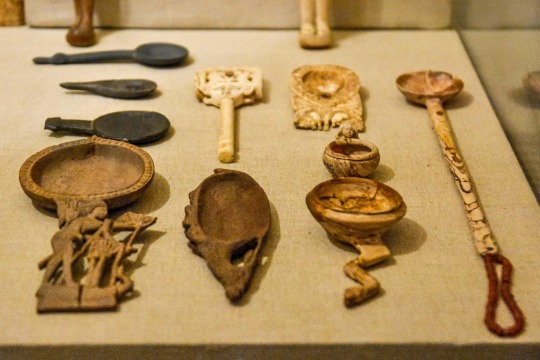
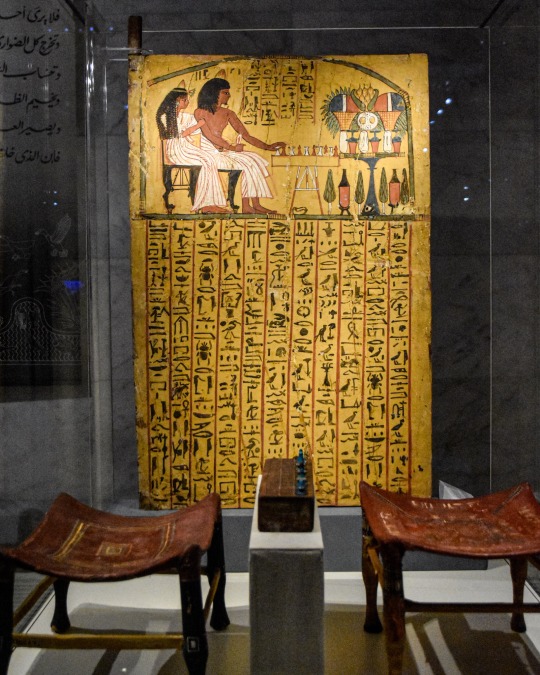
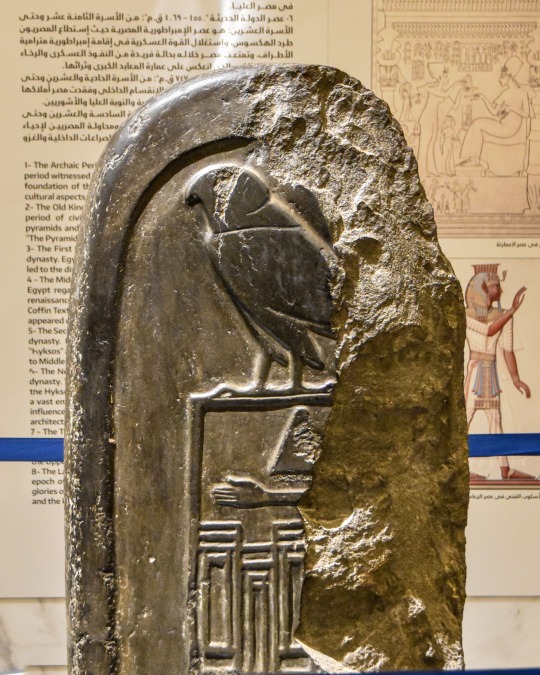
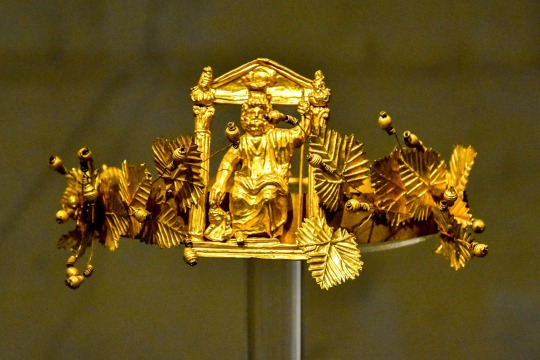
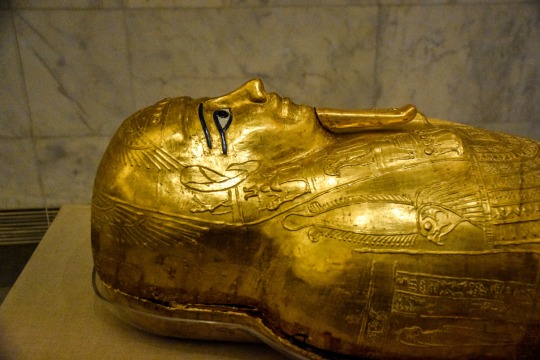



SATURDAY, OCTOBER 5, 2024 — CAIRO, EGYPT. Like the old Chad & Jeremy song says, "They say that all good things must end someday."
This morning we said a sad goodbye to the Viking Osiris and to the Nile River. We flew from Luxor to Cairo to spend our last night in Egypt. This has been a wonderful trip. We were very busy, we saw a lot, we learned a lot. And that's precisely why we came. It will take a while to process everything we've experienced. Becky and I have taken some wonderful trips in the past 16 years that we've been together. And I'm pretty sure that we will think of this as one of the best.
But we're tired now. And we can feel the tug of home. Still, we were eager to do our last excursion, a guided visit to the National Museum of Egyptian Civilization. It houses an impressive collection of historical artifacts, going back many thousands of years. And our guide (today it was Sherine, rather than our usual, wonderful Salah) has a deep and detailed knowledge of Egyptian history and culture. We saw and heard about a lot of fascinating relics. Like an ancient Egyptian make-up kit. A game board and two stools for those quiet evenings in the afterlife. Carvings and clothing and jewelry and kitchen tools and sarcophagi. And in the lower level, a mind-blowing collection of the actual mummies of actual kings and queens that we could see right up close. (But no photos allowed.) The NMEC is truly a wonderful and important place.
But for me, it all kind of mooshed together. (If you've been following this blog, maybe you feel the same way.) After all we've already seen and done on this trip, I think my brain is full. I was ready to be done.
So now we are back in our hotel, the stunning Intercontinental Cairo Citystars. The lobby has sphinxes and an obelisk! We will have dinner here tonight, then go to sleep, and head to the airport early in the morning for our long flight home. It's time.
I will close with some random thoughts and observations about our time in Egypt.
- This is the most foreign country I've ever been to. Everywhere else I've been has had its cultural roots in Europe. The primary language in Egypt is Arabic. Most people speak a little bit of English, but not very well.
- Security is a big thing here. Our bus had to go through checkpoints with armed guards almost everywhere we went. In fact, much of the time there was a man in a suit on our bus who had an awkward bulge on his hip. And once a woman in our tour group took a photo of a soldier from the bus window. But that soldier saw her do it, so he came onto the bus, took her phone, and erased the photo.
- The Nile River is the one and only thing that made Egypt a great nation. It provides all the drinking water, all the agricultural irrigation, and most of the commercial transportation. Beyond the Nile Valley, the other 95% of the country is desert. There are a few towns around oases out there. And there are still nomadic groups who roam the desert. But other than the fertile Nile Valley, Egypt ain't much.
- But it is a country with a history and culture so old that folks from a young country like the U.S. have a hard time comprehending it.
- I was pleased that there isn't much graffiti in Egypt, even in a big city like Cairo. But what there is, is in Arabic.
- It's always good to travel, but it's always good to go home again. There's no place like it. It's where the heart is.
It's been a good trip.
(And one more time, if you want to see the photos better, just click on them.)
0 notes
Text
4 of Wands. Mystic Spiral Tarot


Themes: Creative checkpoint. Manifest will. Force and form. Perfect pairings. Marriage. Power couples. Order and fulfillment. Fleeting unions. Temporary refuges. Astrology/Element Aries decan III is a perfect pairing of a sign ruled by Mars and a decan ruled by consort Venus. Four gives the influence of magisterial Jupiter, officiating the marriage and wrapping up what was initiated. In Aries I the unadulterated energy of fire sprang forth in a martial spirit of independent conquest. The dominion won was established in Aries II through solar wise action. In Aries III, the charms of Venus yoke even Mars, exchanging might for works of peace and social graces. Both Picatrix and Agrippa describe an Aries type of man, restless, clothed in red, wearing Venusian golden bracelets, unable to do some form of good he wishes. Perhaps this lack comes from the impermanence of the final decan, or perhaps this shows Venus’s detriment in Aries, or that the stability of fours is short-lived. Venus can beguile Mars for only so long before he turns his energy once more to approaching strife. Meanwhile, though, we can enjoy the bright beauty of harmonious union. Mythology/Time of Year While the decan and its ruler give us the obvious dynamic of Ares and Aphrodite, there are numerous others who fill the roles of Emperor and Empress. Primordial Greek gods Gaea, the personified earth, and Ouranos, who embodied the sky, came together to create the Titans. The Titans bore siblings Zeus and Hera, the ultimate power couple, King and Queen ruling the gods of Mount Olympus. In Egypt, sky goddess Nut each night merged with the earth god Geb. Their four children were power couples as well: Isis, Queen of Heaven paired with Osiris, King of the Gods and the Underworld. Nephthys, goddess of water, birth, and death, paired with Set, god of chaos and fire. The Hindu trinity of Venusian goddesses chose their gods. Lakshmi, goddess of fortune, who rose from the sea like Venus, wed Vishnu the preserver. Parvati, goddess of love, espoused Shiva the destroyer. Saraswati, goddess of the arts, was partnered with Brahma the creator. Susan T. Chang
1 note
·
View note
Photo

god this is my favorite dang quote from the whole episode, I frantically scribbled it in my planner on the bus
also, there’s an Osiris in this picture! The star background is courtesy of the European Space Agency- it’s of our-Sun-like star 51 Pegasi in the constellation Pegasus. In 1999, there was a American Physical Journal smackdown as two scientific teams rushed to publish their findings- they’d observed a planet moving across the face of the star, or “transiting”. Its official designation is HD 209458 b, aka Osiris.
#the strange case of the starship iris#tscotsi#checkpoint osiris#SPACE#my physics heart is delighted by this podcast and I#hope jessica feels better soon#as someone who is also basically playing medication roulette#mine#original#summer of something
197 notes
·
View notes
Text
NASA OSIRIS-REx Successfully 'Rehearses' Bennu Landing
NASA OSIRIS-REx Successfully ‘Rehearses’ Bennu Landing

The schematic representation of the trajectory followed by OSIRIS-REx during its Checkpoint trial. (Image: NASA)
During the procedure, OSIRIS-REx made its closest ever approach to Bennu, coming within just 75 metres of the asteroid’s surface.
News18.com
Last Updated: April 16, 2020, 10:05 AM IST
Mankind’s quest to better understand asteroids just went a step closer.…
View On WordPress
#asteroid belt#Asteroid Bennu#Asteroids#Bennu#landing#nasa#Nasa OSIRIS-REx#nasa osiris-rex trial run#osiris rex#osiris-rex bennu#osiris-rex checkpoint#osiris-rex trial run#OSIRISREx#Rehearses#Successfully
0 notes
Photo

Checkpoint: OSIRIS-REx Practices Sample Collection via NASA This image shows sample site Nightingale Crater, OSIRIS-REx’s primary sample collection site on asteroid Bennu. https://ift.tt/3b9y8CN
0 notes
Photo

Checkpoint: OSIRIS-REx Practices Sample Collection #NASA https://ift.tt/3b9y8CN
0 notes
Note
You absolutely did not ask for this, however!
Regarding tags: For the one NPC you haven't met yet, since Osiris and Ganaka both happen to share names with plot-important queer space Sci-Fi media locations (TSCOSI's Checkpoint Osiris and MBD's Ganaka Pit: idk if this is a coincidence or not but I DO know you've consumed these) I would like to propose Second Star to the Left.
While I would personally go with Fenris (Fenris Station, the prison in E10), I know you have an OC called Ferris, and I am pleased to report you have many other options, including Euphoria, O’lokig, Gaia, The Switchboard, and Delta-Gamma-One-Four-Six-Two, which I think we can both agree are all flawless names for any npc.
hello anon!!! this made my absolute day (saw the notification at work and was wiggling with excitement for the rest of my shift). first off you are getting such a good grade in knowing my obscure oc lore!! (unrelated Please feel free to message me about it if u ever like, I will talk your ear off about the lighthouse files (current campaign) or literally any of my ocs) you are also getting so many bonus points for recognising osiris and ganaka name origins, and fenris SLAPS so I am absolutely going to be stealing that for my unnamed npc thank you so so much for all of the name ideas I love them So Much!!
#also damn you've been paying enough attention to know about Ferris they're an Obscure one#so sad this was on anon bc i want to talk to you for real#ask#tlf
3 notes
·
View notes
Text
halo infinite is just not worth playing/completing for what little you end up getting which - quite frankly - hurts to say because so many of us were banking on this game. and there is a lot in the game to like but sadly not enough of it.
the grappling hook is fun and the gunplay is very solid, not to mention that chief, cortana 2, and echo 216 pilot all have likeable dynamics with each other. and that’s it. there’s really not much else good about it
The open world aspect just doesn’t work and holds the game back. Firefights with enemies where you have plenty of room to clamber, grapple, and maneuver are great, but it’s held back by the various Ubisoft copy/paste time fillers. Vehicle maneuvering is such a chore because the terrain is too mountainous, and there’s not enough open vistas to just drive across. I was taking a warthog with two marines up a hill to fight this powerful group of brutes, and the moment you catch any air - even for a second where you just bump a small hill - you lose momentum and start sliding down the hill, undoing any progress you made. The horses in Skyrim shouldn’t be outperforming and outnavigating the military ATVs in a game that ten years younger. The checkpoint system can work for or against you. The game also severely lacks variety in its levels because you’re just stuck in that one alpine forested part of the map. No deserts, beaches, swamps, or tundras like we see in the last games or even footage. Hell, we don’t even get those deer or brontothere we saw in the trailer. A lack of enemy variety also kinda hinders things because outside of the Covenant, you fight the sentinels on occasion. No Flood or Prometheans or anything new to tackle.
The plot itself - despite being a sequel to Halo 5 and Halo Wars 2 - feels like reboot of Halo 1 again but half finished. The game starting us over Zeta Halo fighting Atriox with no real frame of reference after the events of Guardians/Wars 2 only to hard cut six months later to a completely different setup is such a strange decision, which only serves the weird unnecessary twist at the end. The plot itself relies on Chief, the Pilot, and Cortana 2 which isn’t really a lot to stand on unfortunately. You don’t have anyone else to cooperate with and share screentime. No Bisenti, Mendoza, Stacker, Chips, Johnson, Arbiter, Shipmaster, Buck, Mickey, Dutch, Romeo, Noble Team, Keyes, or even a Guilty Spark. Not even Blue Team or Team Osiris are involved, just conveniently handwaved away as doing something else somewhere else. No characters to get into the shit with you and break things with some levity. They have marines there to say Funny Dialogue™, but it just feels more like a “well the old halos did it” rather than something they felt interested in. There are no marine characters out on the halo that you meet and go “oh, it’s that guy! I love him!” The marines are just bland characters there only to do the job and don’t feel like fun sidekicks to adventure with. Outside of the grunts, the other members of the Covenant feel rather flat and are reduced to very basic interpretations of their roles. Elites have lofty and drawn out dialogue about honor and battles with rather flat performances and no weight to the dialogue, which is nowhere near as entertaining as them just going “worhby” like in Halo 1. Also, why the fuck do Jackals talk now? It’s gross.
Escharum’s gimmick gets old really quick. I like warrior/philosopher villains, but every single encounter with him consists of a long-winded lofty soliloquy that’s there to pad the game’s time and set him up as this big final boss. Every cutscene plays out the same with him, and there’s no other interesting Covenant characters to balance him out. Everybody else is just some henchman for you to kill with nothing of their own to contribute. A major far cry away from the Prophets, Guilty Spark, Tartarus, Ripa ’Moramee, or Gravemind. Better than Jul ‘Mdama at least. Ultimately, you’re just relieved to kill Escharum because all those tedious dialogue sequences are finally over. And your reward is a rather abrupt ending that serves as a way to segway to more story DLC The Covenant has struggled with direction and development since 343 took over, and the Banished are just an extension of that. Unfortunate because Halo Wars 2 was fairly solid in handling the Banished.
Customization and in-game rewards are a fucking joke, with everything and anything you can unlocked being nickeled and dimed. Unless you get lucky and a weekly event rolls out something neat, the only way you’re getting anything to mix up your character model is either through the battle pass or buying it for $10-$20 on the store. Which you do by buying credits with real money that you then use to buy gear while also not offering a way to earn credits in-game, thus making me question why you have to buy credits in the first place and not just have the price be what it is. Hell, I fully admit I’ve bought a few things, but that came with the expectation that you would eventually unlock things naturally by playing and earn things in-game. But that is not the case, because the campaign dropped and all you get for it are emblems and skins. Three different variations of red and like two greys, I think. No exclusive armor from playing the campaign or collecting all the skulls. No Hayabusa, Mark V or IV, not even the Yoroi armor. It’s the most unfriendly thing I’ve seen to casual players and literally lootboxes would’ve been better, which is a hell of a fucking take. Even if you gotta lock a lot of customization behind a paywall, other games have done that in a way that’s less agonizing, like Warframe, FF14, Black Desert, etc. Even Fortnite does it better. The system is so rigid and restrictive that you can’t even colorize your armor pieces. You have to select pre-colorized skins that pick the pattern for you. Even Halo 5 wasn’t this bad.
Multiplayer has its own plethora of problems, which really stings considering how solid the gameplay loop is when it works. Bullet dropoff is a thing in many guns instead of them just being hitscan, which is just annoying. 343 weapons just don’t feel fun to play and lack the punch of the Bungie era weapons, most of which have been replaced aside from the iconic ones. Only ten levels to play, and they get old really fast. No way to vote on or choose what you wanna play as any sort of game variety is all RNG-based. So if you have a challenge where you need to do Stockpile in BTB, you have a 25% chance of getting Stockpile. This complete random shuffling of levels and gametypes is clearly a way to stretch out progression and make you sweat for everything you’re worth. The sandbox is also incredibly rigid and not at all casual friendly. It’s all geared towards the competitive scene and feeling like an esport. No Forge, Firefight, Infection, Grifball, Shotty Snipers, Co-Op, File Share, or anything like that. We just recently got Slayer and SWAT added.
This is clearly a game that needed another year in development and fine-tuning to be complete because - as is - the campaign is not worth $60. It’s barely worth $30. But Microsoft was determined to push thing out regardless because not only has it already been delayed once already and struggled with high turnover and being $500 million money sink, Microsoft desperately needs a hit to push Xbox sales. The Xbox needs a killer app because Xbox just doesn’t really have much going for it other than the Game Pass, and that’s not enough. Exclusives sell systems, and they’re struggling from a marketing and PR standpoint with that next to Sony.
Sony has its own problems, and PS Now is fucking garbage. But they have a much stronger library of major titles available and in the works for the PS5. Demon’s Souls, Persona 5, Ghost of Tsushima, Days Gone, God of War, Ratchet and Clank, MediEvil, The Last of Us, Uncharted, Returnal, Bloodborne, Horizon, the KotOR remake, Wolverine, and Spider-Man. Xbox just has Gears, Forza, and Sea of Thieves. None of which really were the major gangbusters that either Sony’s titles or Halo are. And after missteps like Scalebound and Crackdown 3, they’re looking for some real payoff. Like a real solid system selling major success. Probably why they’re also bring Fable out of retirement as well.
It’s just unfortunate that Halo Infinite has such a solid foundation that is held back by abysmal game design decisions and now being reduced to a live service title when the series’ original solid stature proved it didn’t need to be that way. 343 has a whole new fight planned for you in the future, but as far as I’m concerned, this fight’s finished. Infinite can sit in the dumpster with Cyberpunk 2077.
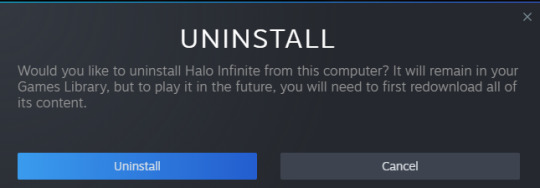
7 notes
·
View notes
Text
Throwback to that time Arkady got the priority status of the Iris case bumped up all by herself
Starship Iris, season 1 episode 2:
AGENT: We have verified the identity of Arkady Patel, a.k.a. Kay Grisham, a.k.a. Ishani Kanetkar. She is a known con artist, a registered subversive, and a suspected army deserter. Too many other crimes to detail here.
[...]
The Starship Iris Case is currently classified as priority six. Due to the involvement of the criminal known as Arkady Patel, it is strongly recommended that this be revisited.
- You can't tell me that Arkady didn't cackle a bit when she listened to this (because the crew have definitely all listened to the reports they starred in). Also:
Starship Iris, season 1, episode 4:
AGENT: Our team is still working to find and tag every false identity connected with the fugitive Arkady Patel. Verified: Kay Grisham, Ishani Kanetkar, and Sister Theresa Margaret. Suspected: Duchess Calpurnia Higginsworth-Cobb.
ILU ARKADY. Who else badly wants a spin-off miniseries entitled The Strange Shenanigans of Arkady Patel?
#TSCOSI#The Strange Case of Starship Iris#Arkady Patel#Agent Park#Starship Iris season 1#Checkpoint Osiris#Phone Home#I'm having so much fun revisiting these early episodes#I love hearing how the characters are built up over just a few appearances#I did totally cry while listening to Krejjh's description of the end of the war in Phone Home#also that conversation with Eejjhgreb is BRUTAL#so well-written and acted#and brutal
10 notes
·
View notes
Text
Danger I feel you, but I will not bow. Fear I taste you, but I will not relent. Mortality I see you, but I will not follow.
------
The Strange Case of Starship Iris, S0E02 Checkpoint Osiris.
4 notes
·
View notes
Text
NASA’s OSIRIS-REx is One Rehearsal Away from Touching Asteroid Bennu
NASA - OSIRIS-REx Mission patch. Aug. 6, 2020 NASA’s first asteroid sampling spacecraft is making final preparations to grab a sample from asteroid Bennu’s surface. Next week, the OSIRIS-REx mission will conduct a second rehearsal of its touchdown sequence, practicing the sample collection activities one last time before touching down on Bennu this fall. On Aug. 11, the mission will perform its “Matchpoint” rehearsal – the second practice run of the Touch-and-Go (TAG) sample collection event. The rehearsal will be similar to the Apr. 14 “Checkpoint” rehearsal, which practiced the first two maneuvers of the descent, but this time the spacecraft will add a third maneuver, called the Matchpoint burn, and fly even closer to sample site Nightingale – reaching an altitude of approximately 131 ft (40 m) – before backing away from the asteroid.
Image above: This artist’s concept shows the trajectory and configuration of NASA’s OSIRIS-REx spacecraft during Matchpoint rehearsal, which is the final time the mission will practice the initial steps of the sample collection sequence before touching down on asteroid Bennu. Image Credits: NASA/Goddard/University of Arizona. This second rehearsal will be the first time the spacecraft executes the Matchpoint maneuver to then fly in tandem with Bennu’s rotation. The rehearsal also gives the team a chance to become more familiar navigating the spacecraft through all of the descent maneuvers, while verifying that the spacecraft’s imaging, navigation and ranging systems operate as expected during the event. During the descent, the spacecraft fires its thrusters three separate times to make its way down to the asteroid’s surface. The spacecraft will travel at an average speed of around 0.2 mph (0.3 kph) during the approximately four-hour excursion. Matchpoint rehearsal begins with OSIRIS-REx firing its thrusters to leave its 0.5-mile (870-m) safe-home orbit. The spacecraft then extends its robotic sampling arm – the Touch-And-Go Sample Acquisition Mechanism (TAGSAM) – from its folded, parked position out to the sample collection configuration. Immediately following, the spacecraft rotates to begin collecting navigation images for the Natural Feature Tracking (NFT) guidance system. NFT allows OSIRIS-REx to autonomously navigate to Bennu’s surface by comparing an onboard image catalog with the real-time navigation images taken during descent. As the spacecraft approaches the surface, the NFT system updates the spacecraft’s predicted point of contact depending on OSIRIS-REx’s position in relation to Bennu’s landmarks. The spacecraft’s two solar panels then move into a “Y-wing” configuration that safely positions them up and away from the asteroid’s surface. This configuration also places the spacecraft’s center of gravity directly over the TAGSAM collector head, which is the only part of the spacecraft that will contact Bennu’s surface during the sample collection event. When OSIRIS-REx reaches an altitude of approximately 410 ft (125 m), it performs the Checkpoint burn and descends more steeply toward Bennu’s surface for another eight minutes. At approximately 164 ft (50 m) above the asteroid, the spacecraft fires its thrusters a third time for the Matchpoint burn. This maneuver slows the spacecraft’s rate of descent and adjusts its trajectory to match Bennu’s rotation as the spacecraft makes final corrections to target the touchdown spot. OSIRIS-REx will continue capturing images of Bennu’s landmarks for the NFT system to update the spacecraft’s trajectory for another three minutes of descent. This brings OSIRIS-REx to its targeted destination around 131 ft (40 m) from Bennu – the closest it has ever been to the asteroid. With the rehearsal complete, the spacecraft executes a back-away burn, returns its solar panels to their original position and reconfigures the TAGSAM arm back to the parked position. During the rehearsal, the one-way light time for signals to travel between Earth and the spacecraft will be approximately 16 minutes, which prevents the live commanding of flight activities from the ground. So prior to the rehearsal’s start, the OSIRIS-REx team will uplink all of the event’s commands to the spacecraft, allowing OSIRIS-REx to perform the rehearsal sequence autonomously after the GO command is given. Also during the event, the spacecraft’s low gain antenna will be its only antenna pointing toward Earth, transmitting data at the very slow rate of 40 bits per second. So while the OSIRIS-REx team will be able to monitor the spacecraft’s vital signs, the images and science data collected during the event won’t be downlinked until the rehearsal is complete. The team will experience these same circumstances during the actual TAG event in October.
OSIRIS-REx collecting sample
Following Matchpoint rehearsal, the OSIRIS-REx team will verify the flight system’s performance during the descent, including that the Matchpoint burn accurately adjusted the spacecraft’s descent trajectory for its touchdown on Bennu. Once the mission team determines that OSIRIS-REx operated as expected, they will command the spacecraft to return to its safe-home orbit around Bennu. The mission team has spent the last several months preparing for the Matchpoint rehearsal while maximizing remote work as part of its COVID-19 response. On the day of rehearsal, a limited number of personnel will monitor the spacecraft from Lockheed Martin Space’s facility, taking appropriate safety precautions, while the rest of the team performs their roles remotely. The mission implemented a similar protocol during the Checkpoint rehearsal in April. On Oct. 20, the spacecraft will travel all the way to the asteroid’s surface during its first sample collection attempt. During this event, OSIRIS-REx’s sampling mechanism will touch Bennu’s surface for approximately five seconds, fire a charge of pressurized nitrogen to disturb the surface and collect a sample before the spacecraft backs away. The spacecraft is scheduled to return the sample to Earth on Sept. 24, 2023. NASA’s Goddard Space Flight Center in Greenbelt, Maryland provides overall mission management, systems engineering, and the safety and mission assurance for OSIRIS-REx. Dante Lauretta of the University of Arizona, Tucson, is the principal investigator, and the University of Arizona also leads the science team and the mission’s science observation planning and data processing. Lockheed Martin Space in Denver built the spacecraft and is providing flight operations. Goddard and KinetX Aerospace are responsible for navigating the OSIRIS-REx spacecraft. OSIRIS-REx is the third mission in NASA’s New Frontiers Program, which is managed by NASA’s Marshall Space Flight Center in Huntsville, Alabama, for the agency’s Science Mission Directorate in Washington. Related link: OSIRIS-REx (Origins Spectral Interpretation Resource Identification Security Regolith Explorer): http://www.nasa.gov/mission_pages/osiris-rex/index.html Image (mentioned), Animation, Text, Credits: NASA/Karl Hille/University of Arizona, by Brittany Enos. Best regards, Orbiter.ch Full article
16 notes
·
View notes
Photo

Checkpoint: OSIRIS-REx Practices Sample Collection via NASA https://ift.tt/3b9y8CN
9 notes
·
View notes
Text
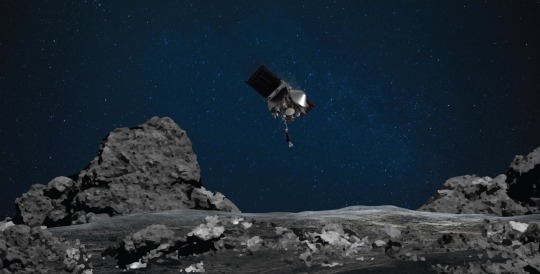
One Rehearsal Away from Touching Asteroid Bennu
NASA's OSIRIS-REx is ready for touchdown on asteroid Bennu. On Aug. 11, the mission will perform its "Matchpoint” rehearsal – the second practice run of the Touch-and-Go (TAG) sample collection event. The rehearsal will be similar to the Apr. 14 "Checkpoint” rehearsal, which practiced the first two maneuvers of the descent, but this time the spacecraft will add a third maneuver, called the Matchpoint burn, and fly even closer to sample site Nightingale – reaching an altitude of approximately 131 ft (40 m) – before backing away from the asteroid.
This artist's rendering shows OSIRIS-REx spacecraft descending towards asteroid Bennu to collect a sample of the asteroid's surface.
Image Credit: NASA/Goddard/University of Arizona
#nasa picture of the day#awesome#beautiful pics#beautiful#picoftheday#photography#science#astronomy#space#space news
2 notes
·
View notes